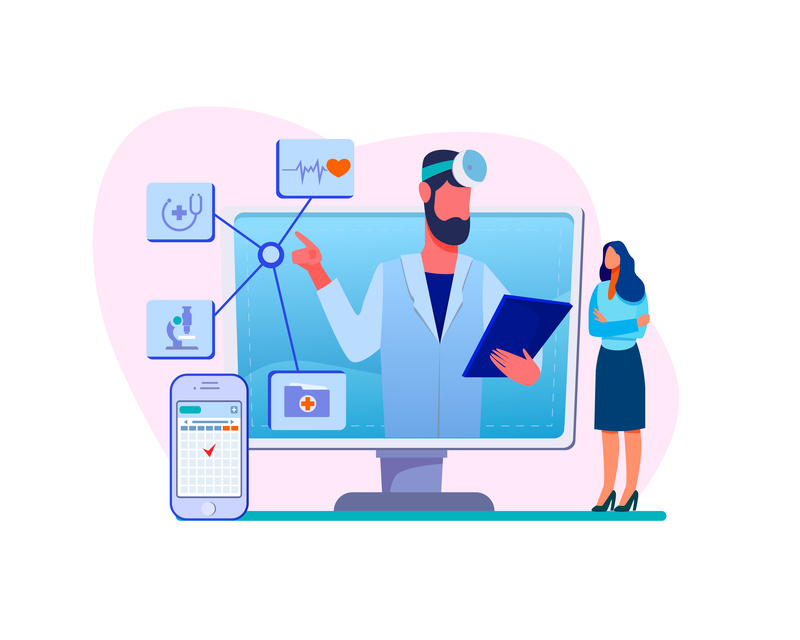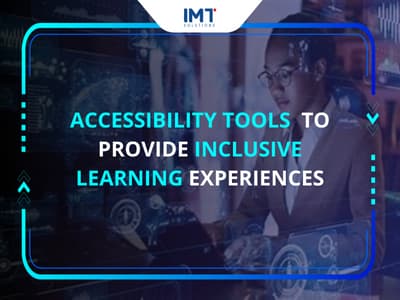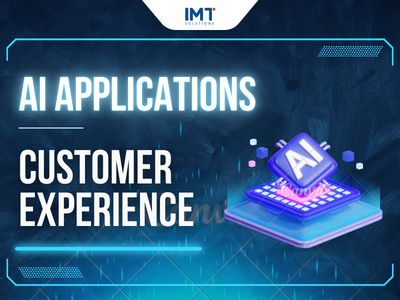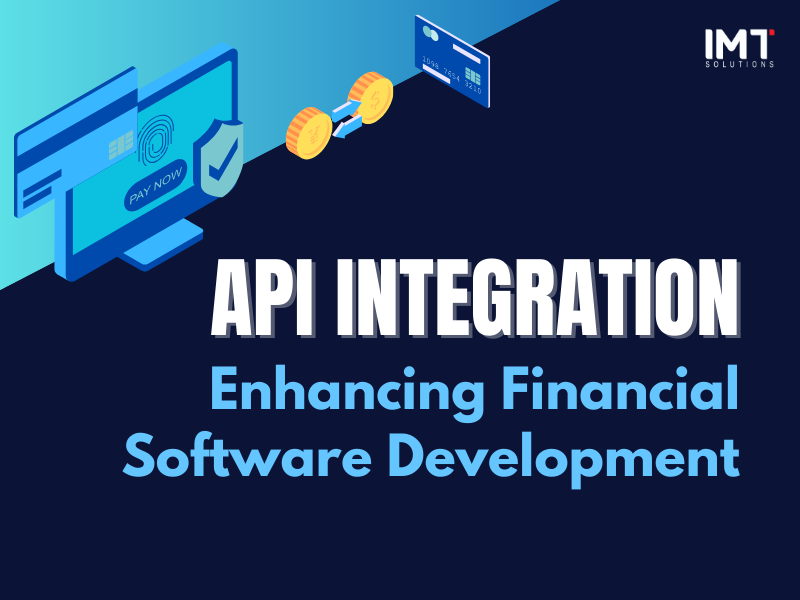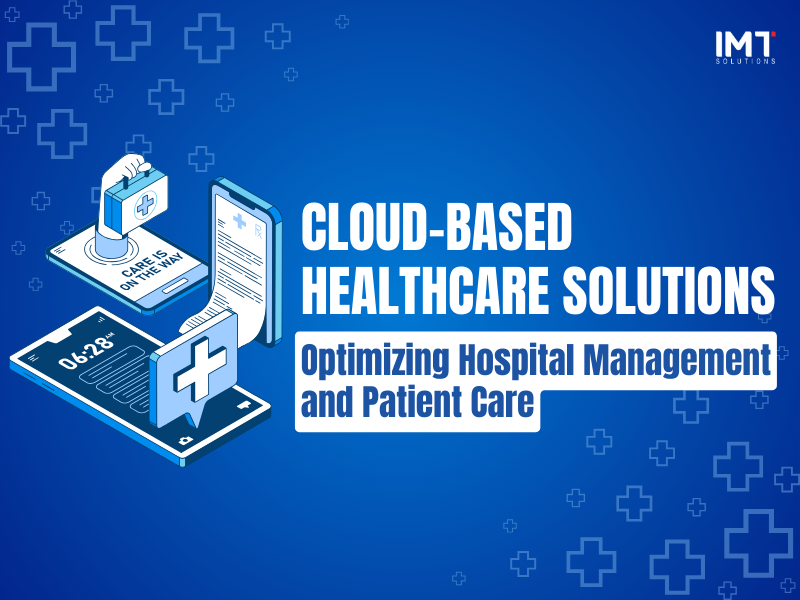Emerging Healthcare Software Development Trends to Watch in 2025
Over the past decade, the healthcare industry has experienced a transformative shift driven by the rapid integration of innovative technologies. These advancements have revolutionized how Innovative technologies deliver healthcare services more efficiently, enabling more efficient, personalized, and cost-effective solutions. From custom healthcare software tailored to specific needs to remote patient monitoring systems, technology continues to reshape the healthcare landscape. As we look ahead, the pace of innovation shows no signs of slowing down. Emerging trends in healthcare software development promise to redefine the industry even further. In this blog, we’ll explore the key healthcare software development trends set to dominate in 2025, offering insights into how these advancements can drive growth and success for your business in the ever-evolving healthcare sector.
Understanding the Healthcare Software Development Market Landscape
The global healthcare software market was valued at $663.0 billion in 2023. It is projected to grow at a compound annual growth rate (CAGR) of 15.8% from 2024 to 2030. This steady growth is driven by the rising adoption of mobile devices and the increasing demand for remote healthcare solutions. Advances in artificial intelligence and telemedicine are also fueling this expansion, enabling smarter diagnostics and real-time patient monitoring. Additionally, the adoption of wearable technology and IoT-enabled devices is transforming how healthcare data is collected and analyzed. Governments worldwide are also investing heavily in digital healthcare infrastructure to improve accessibility and quality of care. This convergence of factors is set to drive the healthcare software development market forward at an unprecedented pace. The integration of technology in healthcare is expected to expand further as digital adoption rises with improved internet and mobile device coverage. This growth is also fueled by the increasing affordability of smartphones and the widespread availability of high-speed networks. Additionally, advancements in 5G technology are enabling faster data transmission, supporting real-time healthcare applications. As a result, more healthcare providers are leveraging digital tools to enhance patient care and streamline operations.
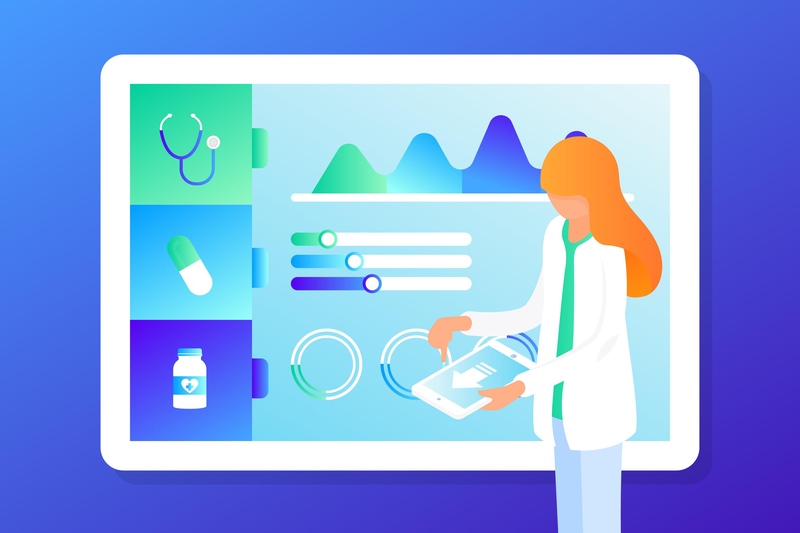
Top Healthcare Software Development Trends to Watch in 2025
Artificial Intelligence (AI)
In the healthcare sector, AI has transitioned from being a novel technology to a critical tool with applications across various fields. Its capabilities are already evident in areas such as:
- AI-powered diagnostic: AI algorithms significantly improve diagnostic accuracy by analyzing medical imaging data with precision. Their effectiveness in diagnosing diseases often surpasses human capabilities. For instance, a UCLA study revealed that AI predicts cancer with 17% greater accuracy than doctors.
- Drug discovery and development: AI revolutionizes drug discovery by predicting molecular behavior and identifying promising therapeutic targets. Drugs developed using AI have demonstrated an 80-90% success rate in the initial phase, outperforming the historical rate of 40-65%.
AI applications in healthcare go beyond diagnostics and drug discovery, with robotics enhancing surgical precision and automated administrative tasks. As AI’s potential unfolds, here are three emerging healthcare software development solutions to watch:
- Data security: The healthcare sector is the most vulnerable to cyberattacks, making it a prime target for security breaches. AI strengthens healthcare data protection by detecting threats and securing patient information in real time.
- Ambient listening: AI-powered ambient listening systems assist healthcare providers by passively capturing and transcribing doctor-patient interactions. This technology reduces administrative burdens, allowing providers to focus more on patient care.
- Augmented reality (AR): AR integrated with AI is transforming healthcare training and procedures. From simulating surgeries for medical students to guiding surgeons with real-time visuals during operations, AR is reshaping how healthcare professionals deliver care.
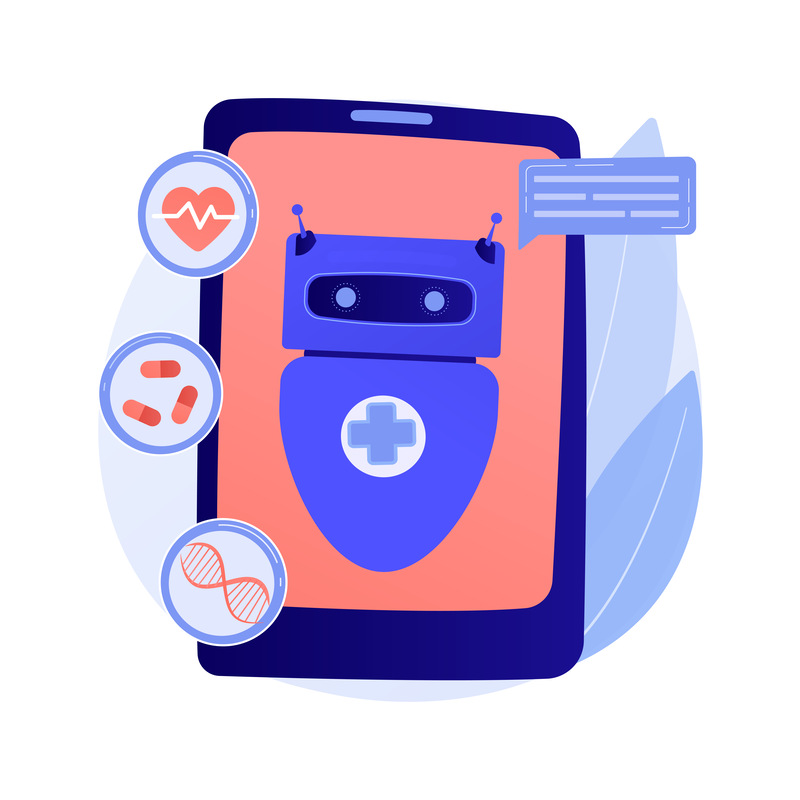
Internet of Medical Things (IoMT)
The Internet of Medical Things (IoMT) encompasses a network of medical hardware, devices, and software applications connected through the internet. This connectivity enables seamless communication between devices, regardless of distance, facilitating faster and more flexible analysis of medical data. According to a report by Grand View Research, the IoMT market is projected to reach $169.99 billion by 2030, growing at a CAGR of 21.1% from 2023 to 2030. Key factors driving this growth include the increasing demand for home healthcare services, the rising costs of advanced hospital equipment, and the growing need for remote patient monitoring (RPM). IoMT is revolutionizing healthcare software development across different areas:
- In-hospital IoMT: Hospitals utilize IoMT sensors and tracking systems to monitor and track the status and interaction of devices and personnel in their hospital. This allows for more effective control of the overall operations of the hospital.
- In-home IoMT: In-home medical devices can transmit data to healthcare institutions, allowing for remote patient monitoring. This enables the connectedness of patients and doctors, facilitating the effective patient monitor.
- On-body IoMT: Wearable biosensors and fitness trackers collect real-time data to enable continuous health monitoring.
- Community IoMT: IoMT is also transforming public health on a broader geographic scale by enabling real-time tracking of disease outbreaks. This allows for monitoring health status of people when they transport across the area.
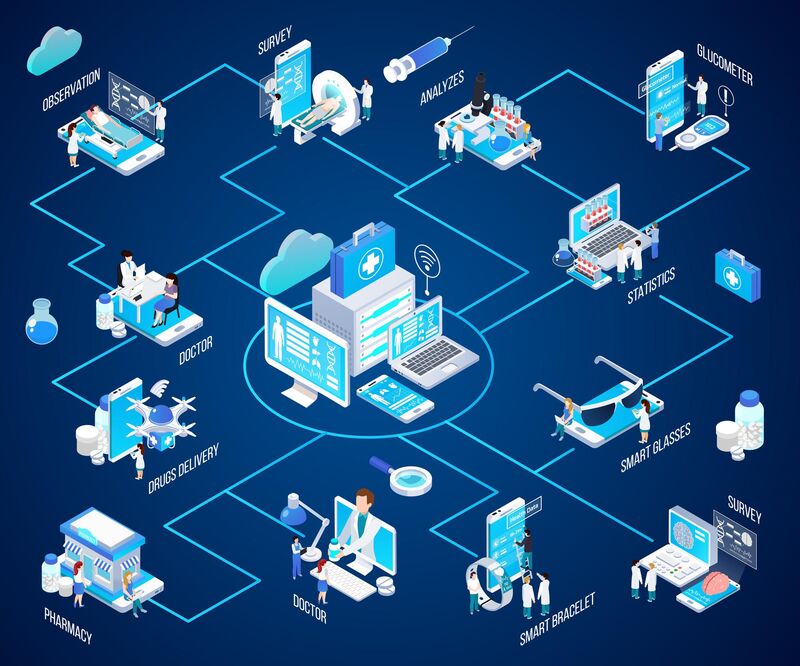
Telehealth
Telehealth is rapidly becoming a key trend in healthcare software development, transforming how patients receive care. Digital technologies enable virtual consultations, remote monitoring, and digital prescriptions, improving accessibility for underserved areas. McKinsey reported that telehealth utilization increased 38 times post-pandemic.
As we approach 2025, telehealth is set to expand even further, making healthcare more accessible to a broader population. This growth reflects ongoing advancements in technology and increasing demand for remote healthcare solutions. Telehealth is not just about virtual consultations anymore; it’s evolving into a comprehensive platform that connects patients and healthcare providers seamlessly. Here are some key telehealth features to watch:
- Integration of AI: AI enhances telehealth with accurate diagnoses, personalized treatments, and automated tasks like scheduling and data analysis.
- Support for wearables: Telehealth platforms increasingly utilize wearable devices to monitor health metrics in real-time, enabling timely interventions.
- EHR Integration: Telehealth solutions now integrate with electronic health records (EHRs), allowing for instant access to patient histories and streamlined care coordination.
As we move into the future, technological advancements will continue to revolutionize healthcare software development, unlocking new possibilities. These innovations will not only enhance patient care and operational efficiency but also pave the way for more accessible, personalized, and data-driven healthcare solutions. With ongoing progress, the integration of cutting-edge technologies will undoubtedly shape a smarter and healthier world.
